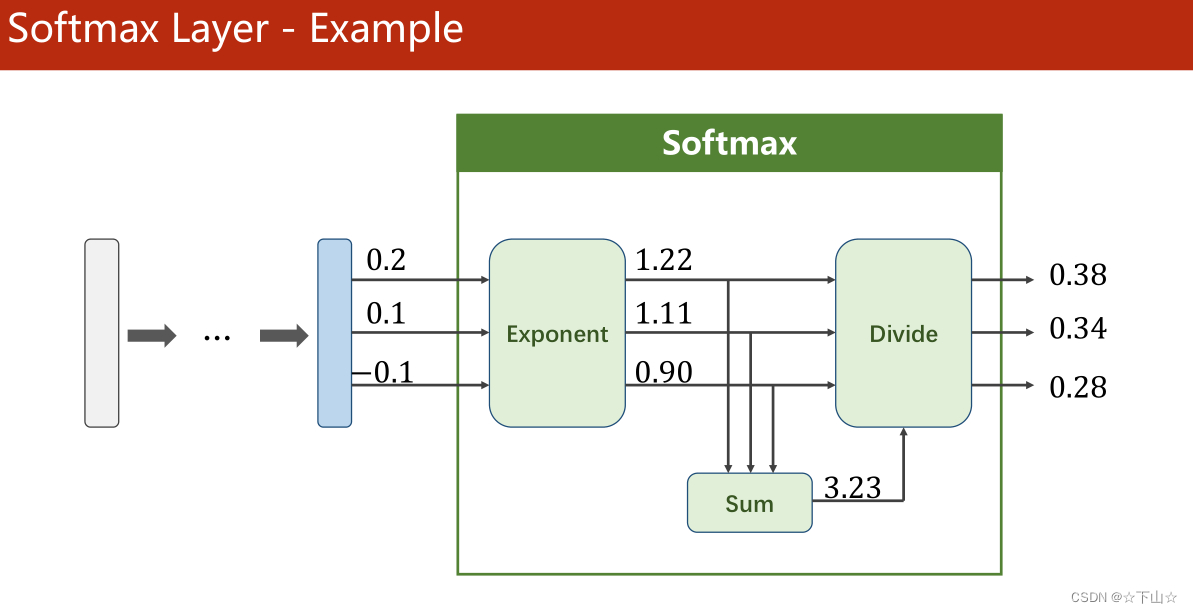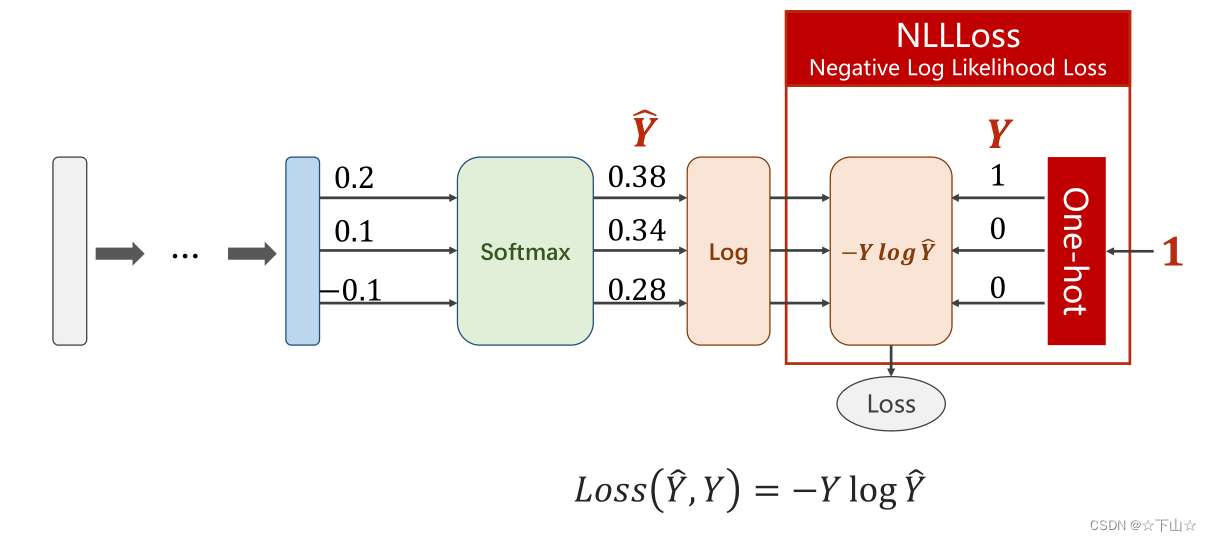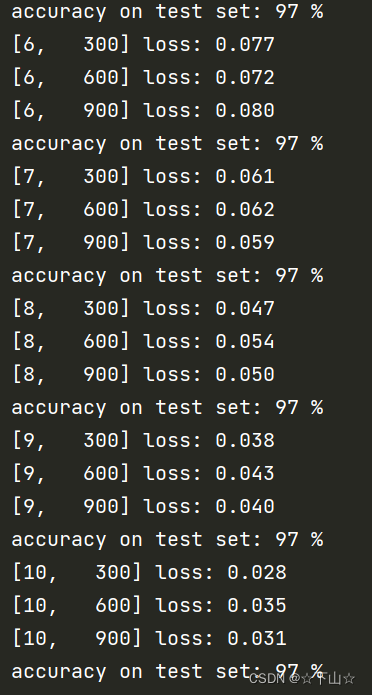一、数据集介绍
The MNIST database of handwritten digits has a training set of 60,000 examples, and a test set of 10,000 examples.
下载地址:http://yann.lecun.com/exdb/mnist/
二、基础
1.softmax的输入不需要再做非线性变换,也就是说softmax之前不再需要激活函数。softmax通过对所有输出概率进行指数变换归一化,使所输出的结果都为正数,且所有类概率和为1。

2.nn.NLLLoss和nn.CrossEntropyLoss的区别
nn.NLLLoss:The negative log likelihood loss.
nn.CrossEntropyLoss:This criterion computes the cross entropy loss between input logits and target.
具体可以看这里:https://pytorch.org/docs/stable/nn.html#loss-functions
对于官网的第一种情况,CrossEntropyLoss就相当于LogSoftmax和NLLLoss的组合。


三、代码
import torch
from torchvision import transforms
from torchvision import datasets
from torch.utils.data import DataLoader
import torch.nn.functional as F
import torch.optim as optim
# prepare dataset
batch_size = 64
transform = transforms.Compose([transforms.ToTensor(), transforms.Normalize((0.1307,), (0.3081,))]) # 使用均值和方差进行归一化
train_dataset = datasets.MNIST(root='', train=True, download=True, transform=transform)
train_loader = DataLoader(train_dataset, shuffle=True, batch_size=batch_size)
test_dataset = datasets.MNIST(root='', train=False, download=True, transform=transform)
test_loader = DataLoader(test_dataset, shuffle=False, batch_size=batch_size)
# design model using class
class Net(torch.nn.Module):
def __init__(self):
super(Net, self).__init__()
self.l1 = torch.nn.Linear(784, 512)
self.l2 = torch.nn.Linear(512, 256)
self.l3 = torch.nn.Linear(256, 128)
self.l4 = torch.nn.Linear(128, 64)
self.l5 = torch.nn.Linear(64, 10)
def forward(self, x):
x = x.view(-1, 784) # -1其实就是自动获取mini_batch
x = F.relu(self.l1(x))
x = F.relu(self.l2(x))
x = F.relu(self.l3(x))
x = F.relu(self.l4(x))
return self.l5(x) # 最后一层不做激活,不进行非线性变换
model = Net()
# construct loss and optimizer
criterion = torch.nn.CrossEntropyLoss()
optimizer = optim.SGD(model.parameters(), lr=0.01, momentum=0.5)
# training cycle forward, backward, update
def train(epoch):
running_loss = 0.0
for batch_idx, data in enumerate(train_loader, 0):
# 获得一个批次的数据和标签
inputs, target = data
optimizer.zero_grad()
# 获得模型预测结果(64, 10)
outputs = model(inputs)
# 交叉熵代价函数outputs(64,10),target(64)
loss = criterion(outputs, target)
loss.backward()
optimizer.step()
running_loss += loss.item()
if batch_idx % 300 == 299:
print('[%d, %5d] loss: %.3f' % (epoch + 1, batch_idx + 1, running_loss / 300))
running_loss = 0.0
def test():
correct = 0
total = 0
with torch.no_grad():
for data in test_loader:
images, labels = data
outputs = model(images)
_, predicted = torch.max(outputs.data, dim=1) # dim = 1 列是第0个维度,行是第1个维度
total += labels.size(0)
correct += (predicted == labels).sum().item() # 张量之间的比较运算
print('accuracy on test set: %d %% ' % (100 * correct / total))
if __name__ == '__main__':
for epoch in range(10):
train(epoch)
test()
部分结果:

本文为系列文章:
| 上一篇 | 《Pytorch深度学习实践》目录 | 下一篇 |
|---|---|---|
| 加载数据集(Dataset and DataLoader) | 资料 | 卷积神经网络-基础篇(Basic-Convolution Neural Network) |






















 975
975











 被折叠的 条评论
为什么被折叠?
被折叠的 条评论
为什么被折叠?










